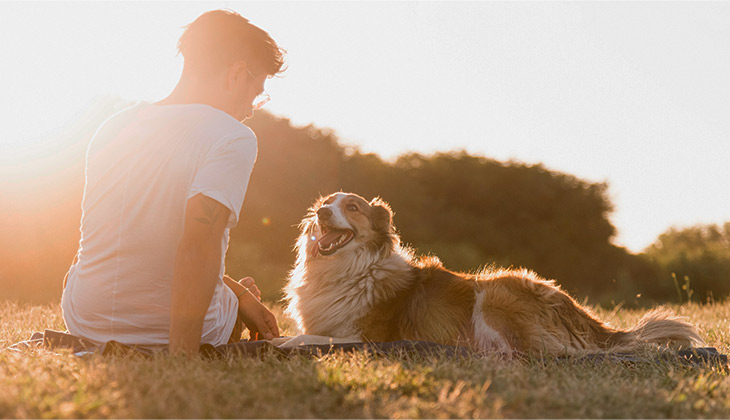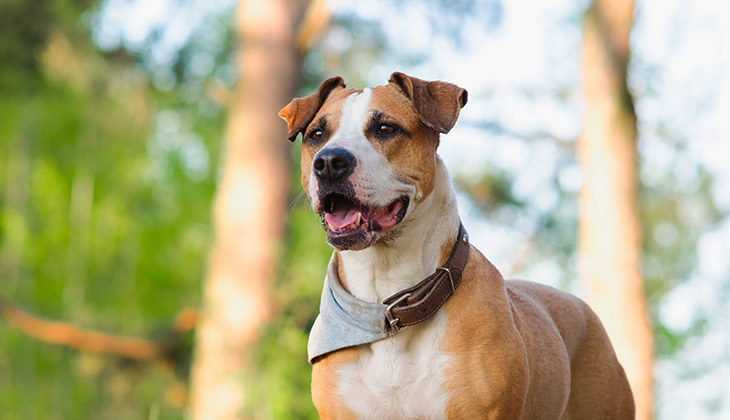How Do I Know if my Dog has a Good Quality of Life?
HEALTH & PROTECTION
18 Aug, 2023
7 minutes

As a pet owner, you want your dog to have the best quality of life. Owners are able to recognize if their dog’s temperament is the same, they’re playful and active, seem comfortable, and enjoy their food normally. Other times, if your beloved pooch suffers an accident or an illness, it’s very noticeable that they are in pain and their quality of life is suffering.
Determining the current status of a dog’s quality of life is not always obvious. Especially as your pet ages, quality of life changes gradually over time because of natural aging, which can be harder to recognize. For this reason, it is important as a dog owner to understand what quality of life actually means for your four-legged friend, and what factors contribute to the best quality of life possible, for as long as possible.
What is Quality of Life?
Because our dogs can’t speak for themselves, it’s up to us, the people who love and care for them, to be able to observe, assess and interpret their quality of life. This assessment should include all aspects of your dog’s life, not just physical health, which means understanding behaviors that are ordinary for your dog and recognizing those that are not. In essence, a high “quality of life” for your dog means being free from illness as well as psychologically healthy and comfortable in his or her social and physical environment.

Why is Quality of Life Important?
Understanding and assessing your dog’s quality of life is extremely important in maintaining both the health and wellbeing of your dog, as well as in taking preventative care measures. When you are able to communicate with your veterinarian about your dog’s quality of life, you provide your vet with a deeper understanding of your dog’s needs so that he or she can provide the most effective care for your dog. Regular quality of life assessments also provide your veterinarian with deeper insight into how your dog is aging, which again, can result in specific, individualized care for your pup.

What are the Risk Factors Associated with Declining Quality of Life?
1. Aging
Natural aging slowly degrades the quality of life for both animals and humans. Often, this process is slow and these changes can be overlooked or even accepted as “just part of the aging process”. For both humans and dogs, aging brings with it an increased risk of mental and physical disease. Owners who have a close relationship with their animals can determine the effects of aging in their animals by evaluating differences in their physicality and behavior over time.
a) Physical
You might notice your dog becoming less active, playful, and even less comfortable, which can be concerning. This can be due to a loss of muscle mass, an increase in overall body weight, a decreased elasticity of connective tissues and/or the development of degenerative changes in joints.
Other physical signs to watch for include:
- Graying and thinning hair
- Changes to coat texture and luster
- Loss of elasticity and wrinkling in the skin
- Mass growths on or under the skin
- Loss of strength and mobility
- Difficulty with stairs or climbing
- Whitening of the lens of the eye
- Breath odor, loose or missing teeth
b) Behavioral
As dogs age, they may become less interactive with humans and other animals. You may find your dog sleeping more, especially during the daytime.
Other signs of behavioral aging may include:
- General restlessness, aimless pacing, especially at night
- Increased anxiety and increased vocalization (or decreased vocalization too)
- Disruption of normal sleep-wake cycles
- Signs of pain
- Inability to navigate their physical environment; getting lost or “stuck” in places
- Failing to recognize familiar humans or animals
- Inappropriate elimination; inability to distinguish appropriate and inappropriate locations for elimination
- Cessation of performing specific functions or obedience to commands
2. Obesity
Most aging dogs experience an overall decrease in energy, and an age-or disease-related decline in activity will further increase the risk of obesity. Obesity may lead to a reduction in quality of life, shortened longevity and an increase in health issues such as:
- The development of diseases such as diabetes, osteoarthritis, urinary incontinence
- Altered respiratory function
- More pronounced joint pain
An overall decrease in energy and age or disease-related decline in physical activity additionally increases the risk of obesity. Obesity is now considered the biggest health and welfare issue affecting dogs today.

What can I do to Ensure Prolonged Quality of Life for my Dog?
As dog owners, we have the power to ensure prolonged quality of life for our beloved furry friends, regardless of physical condition or age. Some of these steps include:
1. Regular visits with your veterinarian
As mentioned above, keeping an open line of communication with your veterinarian is crucial in order to facilitate detection of changes to their physical, nutritional and lifestyle needs.
2. Understanding your dog in relation to his/her different life stages
Like humans, dogs go through stages of development throughout their lifetimes. Your dog’s nutritional requirements change as they age and depend on activity levels. Canine life stages are generally divided in this way:
- Puppyhood (similar to childhood in humans)
- Adolescence/adulthood (starts between 1 and 3 years of age)
- Senior years (begins between 6 and 10 years of age)
- Geriatric phase (7 to 11 years)
3. Consistent activity
Exercise has long been shown to promote healthy aging in humans. Likewise, several studies in dogs have found that lower exercise frequency and duration is strongly associated with overweight status and obesity. In order to avoid the various health issues that go along with weight gain and obesity, a higher amount of exercise per week is an excellent means of keeping your dog healthy.
4. Adapting activity according to your dog’s age-related needs
While consistent activity is crucial, when you detect age-related physiological and behavioral changes in your pup, you can adapt your daily routine according to your dog’s current needs.
5. Learn more about nutritional and vitamin supplements, and other treatments
There are many medical, nutritional, dietary and vitamin supplements available for your dog that can be used as preventative health measures, regardless of age or disease status. These supplements can complement routines consisting of exercise, cognitive enrichment and weight control to improve your dog’s physical and mental state. Your veterinarian can advise you about the best supplements for your pooch.
6. Awareness is power!
Most importantly, staying aware of your dog’s behavior, physical changes, and emotional wellbeing is the key factor to ensuring your furry companion lives a long life with the best quality of life.
RECOMMENDED
POPULAR PAGES
RELATED POSTS
-

Finding out your dog or cat has diabetes can be a lot to digest, learn all the terms so you can ask the right questions and stay on top of your pet’s needs.
-

Pets do not understand the holidays period which change their routines. Here are 6 tips to create a pet friendly home during Chrismas!
-

It is important to know about rabies and how to protect our families. Protect your pet from rabies with an up-to-date vaccination from your veterinarian.
-

Your beloved cats can also suffer from cold and flu. In this article learn how to protect your cat during cold periods.





